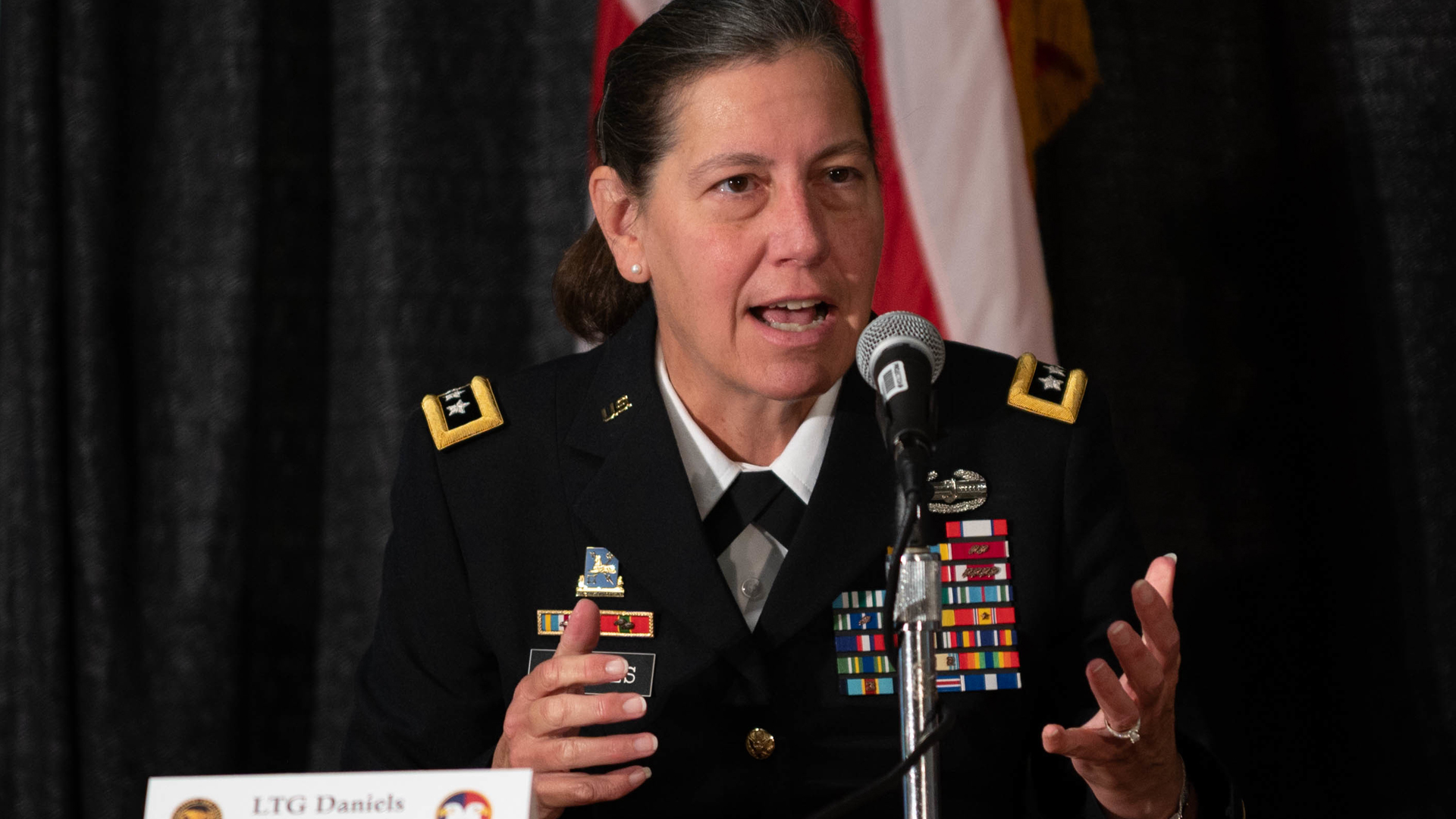

In order to keep soldiers interested in the Army Reserve — and to get potential recruits interested — leaders have to get back to doing hands-on training instead of filling soldiers’ times with online tasks, the chief of the Army Reserve said this week.
In short, soldiers need to be doing more soldier stuff.
Lt. Gen. Jody Daniels told Task & Purpose on Tuesday that many Reserve units are still operating the way they did during the COVID-19 pandemic, focusing on administrative tasks and “stoplight charts” instead of getting soldiers out in the field. “I’m trying to push people … to get back to doing something,” she said.
“Too often, people aren’t letting their creative talents loose … I’m asking people to think about whatever they’re going to be training on, to actually pull it out, use the equipment, make sure that it’s up to date, got the latest patches on the computers, the radios, they actually know how to turn them on and use them, and to really use their stuff and then maintain it,” Daniels said. “And I think that will solve a lot of retention challenges as well as recruiting, because now on Monday morning, you’ve got something to talk about.”
Like the rest of the military, the Army Reserve had to change how it did things during the COVID-19 pandemic. In April 2020, leaders approved virtual battle assemblies to allow soldiers to still have their monthly drill while abiding by the COVID-19 guidelines. Oftentimes, Daniels said, leaders filled time with online training and admin tasks. In turn, training management “atrophied over those couple of years, and probably even a little bit before that,” she said.

And though the Army is moving out of its COVID-19 practices, many units are still operating as if they are in a virtual setting instead of getting out and doing hands-on training.
“We’re finding that a number of our units still focus on all those admin tasks and metrics and worrying about those and generating their stoplight charts,” Daniels said, referring to a form leaders use to assess a unit’s completion of tasks or training with the colors green, yellow, and red. “And they’re not focusing on using the equipment and using their skills and doing something interesting, relevant, meaningful, valuable, skills-oriented.”
Subscribe to Task & Purpose Today. Get the latest military news, entertainment, and gear in your inbox daily.
It’s not just to keep soldiers up-to-date on training, though that’s certainly part of it. But Daniels also said it’s about letting soldiers do what they actually joined to do, which will “enable the soldiers to have stories to share.” It won’t just remind them why they love to do what they do, but it’s also a perfect opportunity to share why others should join as well, she said.
“If you like what you’re doing, you’ll continue to do more of it,” Daniels said. “And if you’ve got something to tell your friends, as opposed to if your friends ask, ‘What do you do?’ And you say, ‘Oh I do nothing.’ Well, then why would I want to join you as you do nothing? … Give them something to be proud to talk about.”

That’s not to say there isn’t online training or administrative tasks that are important to accomplish — there certainly are, Daniels said, and there’s a time and a place for that. She encouraged leaders to find organic opportunities for “hip pocket training,” where leaders and soldiers can have real conversations instead of flipping through a slideshow.
But she believes having those positive stories could help the Army at a time when the service is experiencing its worst recruiting crisis in decades. Senior leaders have asked veterans to tell their stories in an effort to get more young people and eligible recruits interested in joining up. Daniels echoed previous sentiments from other service leaders that one of the significant problems facing the Army is not enough young people know what opportunities exist.
“I’ve got to get people back to doing interesting missions, to say, ‘Hey this is worth doing. I’m now contributing as being part of the service,’” Daniels said. “And until we can that sort of reinvigorated, I think we’re going to be challenged.”
The latest on Task & Purpose
- Air Force claims ‘no intent by the pilots’ to draw sky penis near Russian base in Syria
- Dramatic video shows why Russian helicopters are sitting ducks in Ukraine
- The Marine Corps’ fitness test from the 1950s wasn’t that hard
- Navy jet considered ‘beyond repair’ returns to flight 5 years after mid-air collision
- We salute the Marine who got promoted at a fried chicken restaurant on base
Want to write for Task & Purpose? Click here. Or check out the latest stories on our homepage.